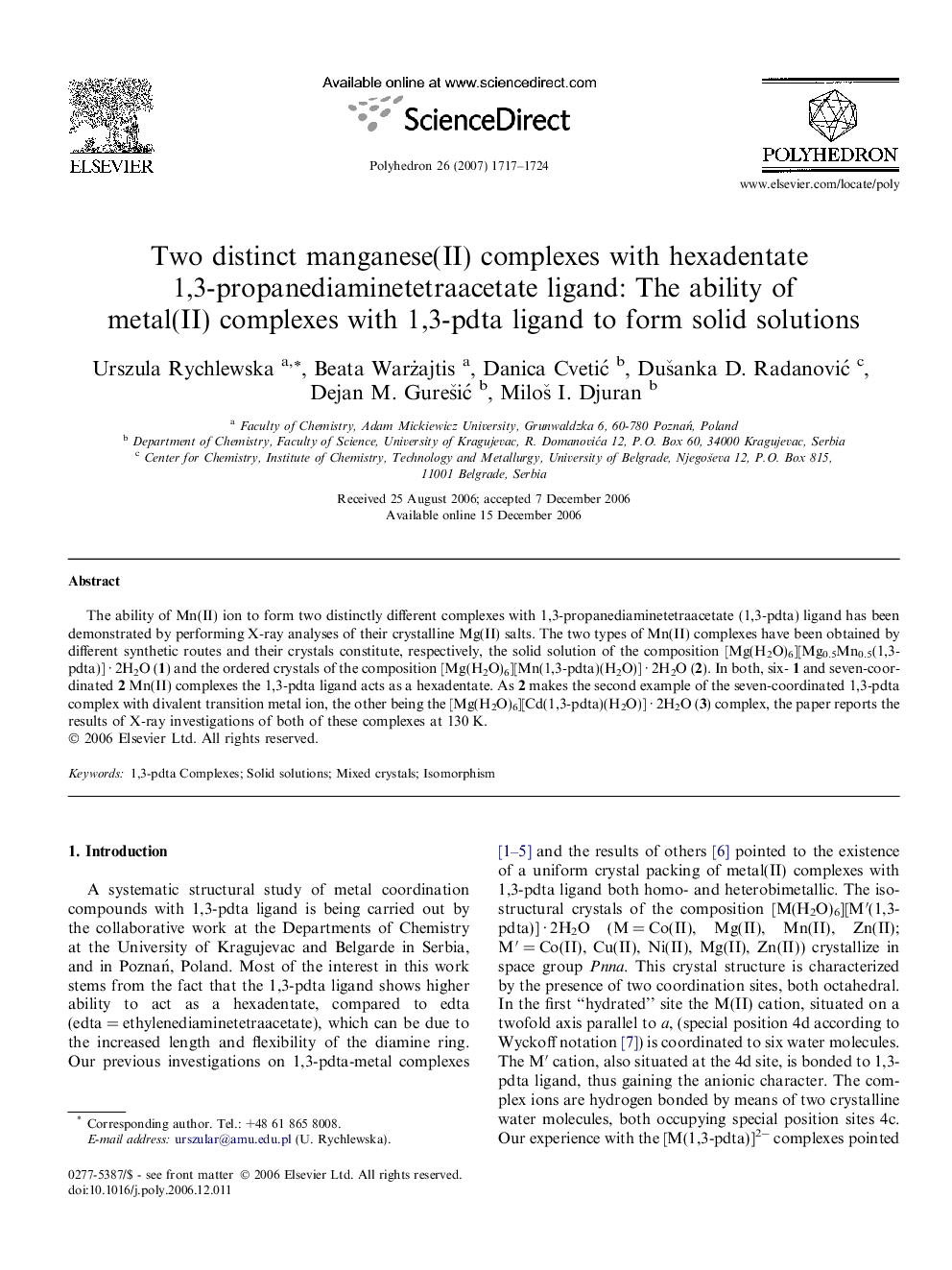| Article ID | Journal | Published Year | Pages | File Type |
|---|---|---|---|---|
| 1338640 | Polyhedron | 2007 | 8 Pages |
The ability of Mn(II) ion to form two distinctly different complexes with 1,3-propanediaminetetraacetate (1,3-pdta) ligand has been demonstrated by performing X-ray analyses of their crystalline Mg(II) salts. The two types of Mn(II) complexes have been obtained by different synthetic routes and their crystals constitute, respectively, the solid solution of the composition [Mg(H2O)6][Mg0.5Mn0.5(1,3-pdta)] · 2H2O (1) and the ordered crystals of the composition [Mg(H2O)6][Mn(1,3-pdta)(H2O)] · 2H2O (2). In both, six- 1 and seven-coordinated 2 Mn(II) complexes the 1,3-pdta ligand acts as a hexadentate. As 2 makes the second example of the seven-coordinated 1,3-pdta complex with divalent transition metal ion, the other being the [Mg(H2O)6][Cd(1,3-pdta)(H2O)] · 2H2O (3) complex, the paper reports the results of X-ray investigations of both of these complexes at 130 K.
Graphical abstractThe preference of manganese(II) ion to form the seven-coordinated [Mn(1,3-pdta)(H2O)]2− complex with the hexadentate 1,3-pdta is disrupted by crystallization from a solution containing besides the [Mn(1,3-pdta)(H2O)]2− the [Mg(1,3-pdta)]2− complex species, resulting in a mixed crystal inclosing the six-coordinated [Mg(1,3-pdta)]2− and [Mn(1,3-pdta)]2− complex anions at the same occupation site.Figure optionsDownload full-size imageDownload as PowerPoint slide
